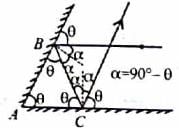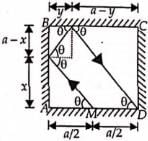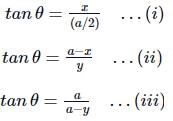Test: Miscellaneous (NCERT) - NEET MCQ
10 Questions MCQ Test NCERTs at Fingertips: Textbooks, Tests & Solutions - Test: Miscellaneous (NCERT)
A giant telescope in an observatory has an objective of focal length 19 m and an eye-piece of focal length 1.0 cm. In normal adjustment, the telescope is used to view the moon. What is the diameter of the image of the moon formed by the objective ? The diameter of the moon is 3.5 × 106 m and the radius of the lunar orbit round the earth is 3.8 × 108 m.
A ray of light travelling in the direction  is incident on a plane mirror. After reflection, it travels along the direction
is incident on a plane mirror. After reflection, it travels along the direction  The angle of incidence is
The angle of incidence is
 is incident on a plane mirror. After reflection, it travels along the direction
is incident on a plane mirror. After reflection, it travels along the direction  The angle of incidence is
The angle of incidence isThe number of capital letters such as A, B, C, D ..... which are not laterally inverted by a plane mirror?
Two mirrors at an angle θ∘ produce 5 images of a point. The number of images produced when θ is decreased to θ − 30∘ is
A man stands symmetrically between two large plane mirrors fixed to two adjacent walls of a rectangular room. The number of images formed are
Two plane mirrors M1 and M2 are inclined at angle θ as shown in the figure. A ray of light 1, which is parallel to M1 strikes M2 and after two reflections, the ray 2 becomes parallel to M2. The angle θ is

Two plane mirrors are placed parallel to each other at a distance L apart. A point object O placed between them, at a distance L/3 from obe mirror. Both mirros form multiple image. The distance between any two images cannot be
Four identical mirrors are made to stand vertically to form a square arrangement as shown in a top view. A ray starts from the midpoint M of mirror AD and after two reflections reaches corner D. Then, angle θ must be
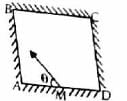
Light incident normally on a plane mirror attached to a galvanometer coil reflects backward as shown in figure. A current in the coil produces a deflection of 3.5∘ of the mirror. The displacement of the reflected spot of light on a screen placed 1.0 m away is

A plane mirror is placed along the x-axis facing negative y-axis. The mirror is fixed. A point object is moving with  in front of the plane mirror. The relative velocity of image with respect to its object is
in front of the plane mirror. The relative velocity of image with respect to its object is
|
257 docs|234 tests
|



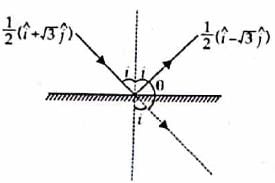
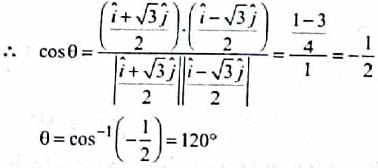


 , where θ is in degrees
, where θ is in degrees


